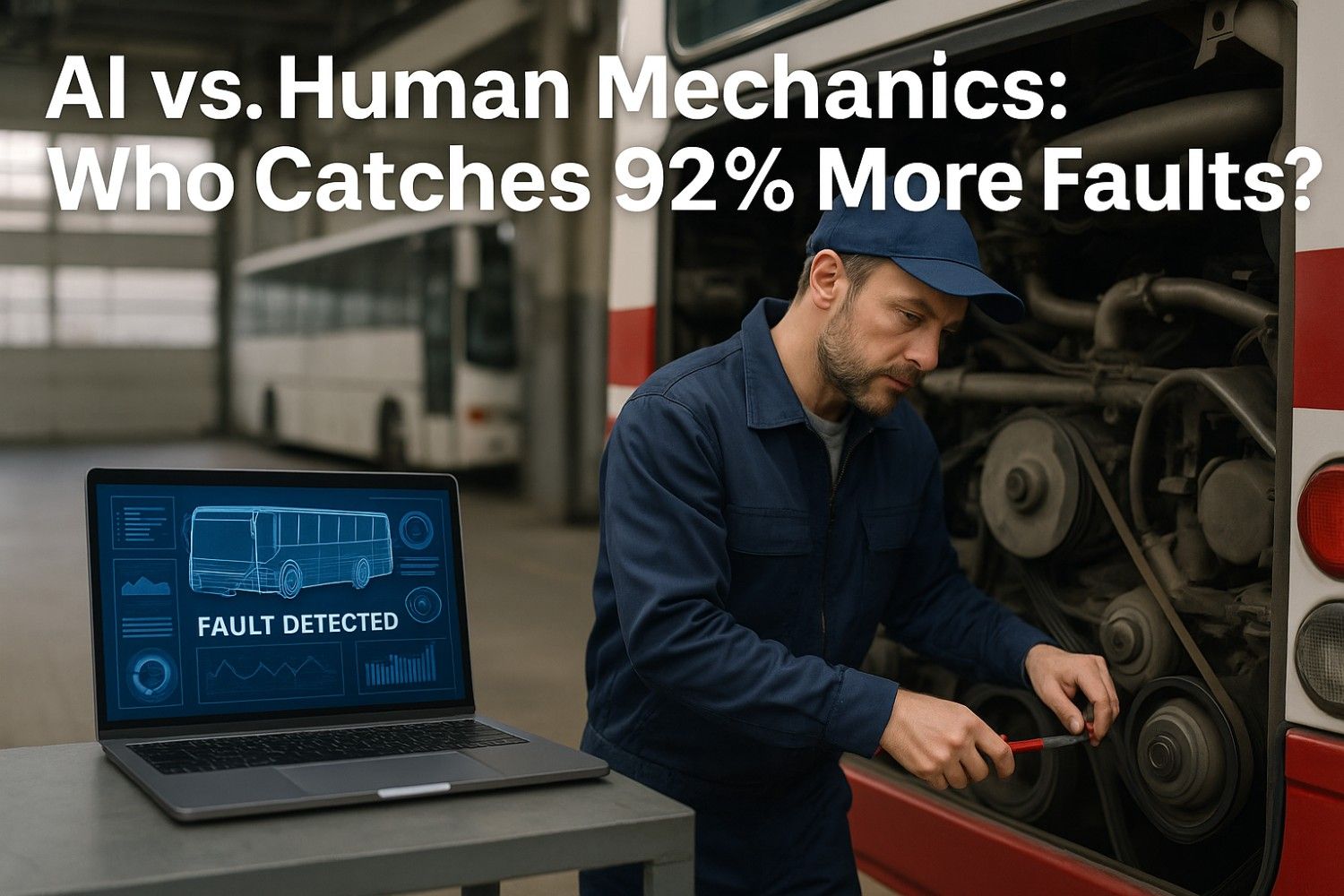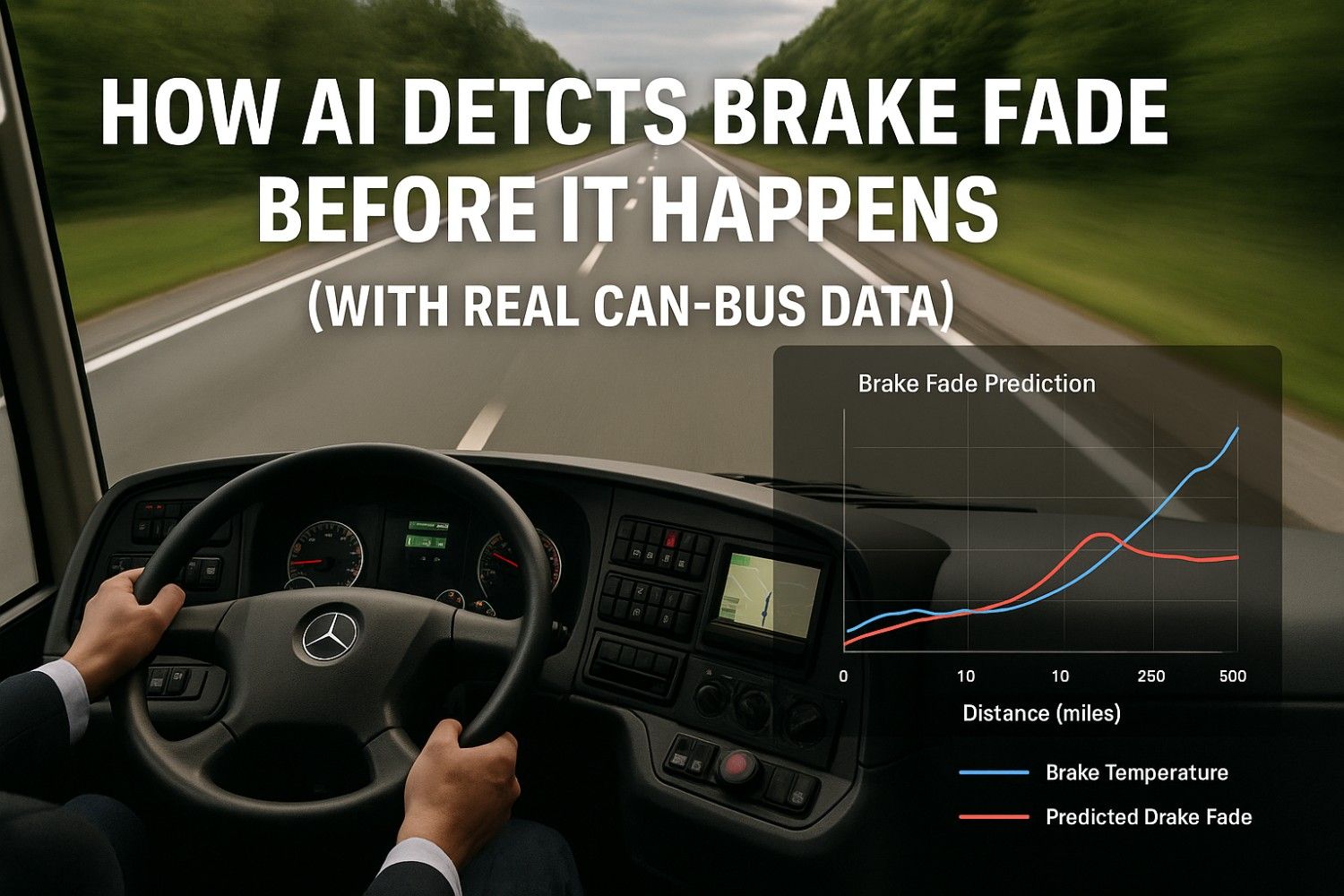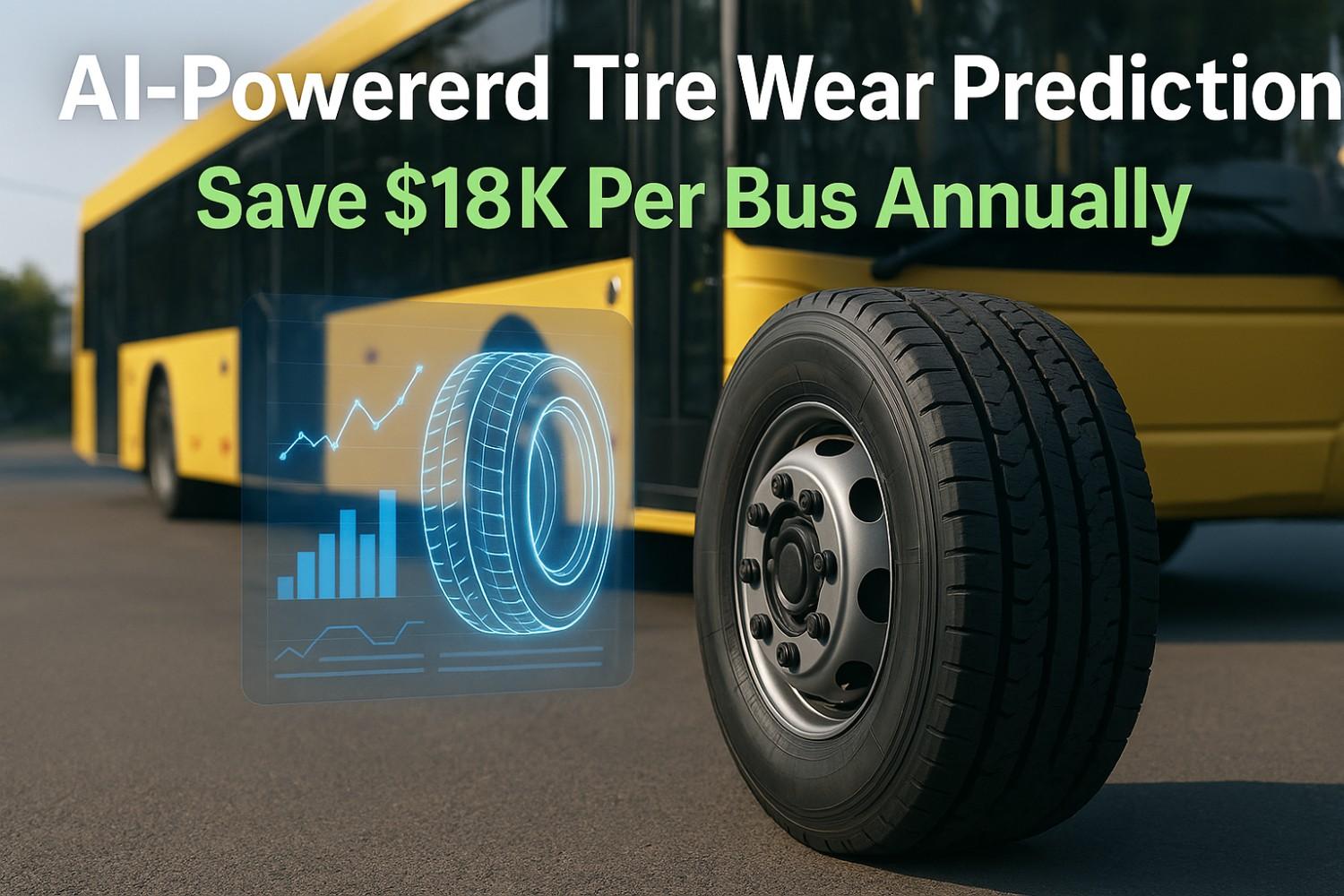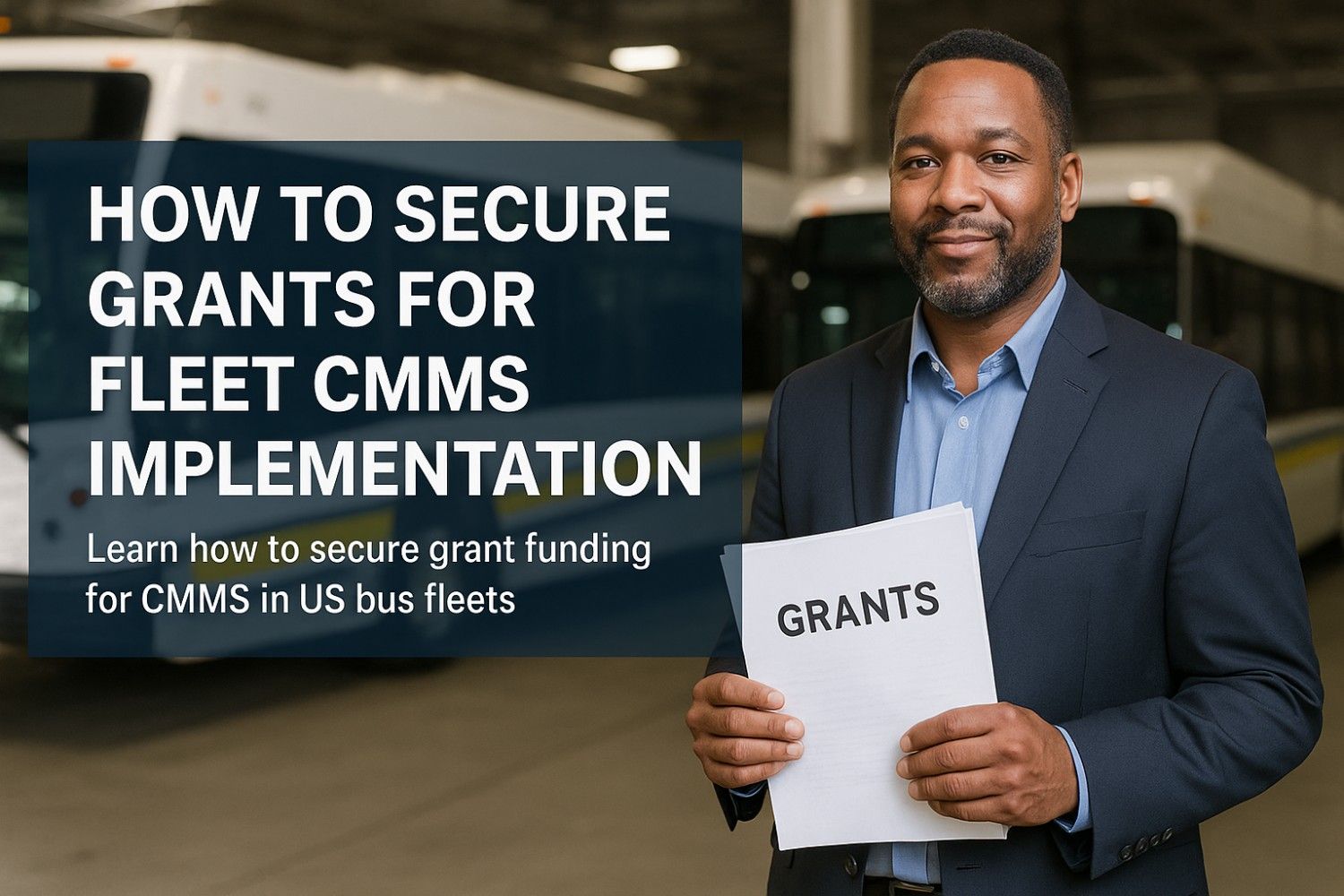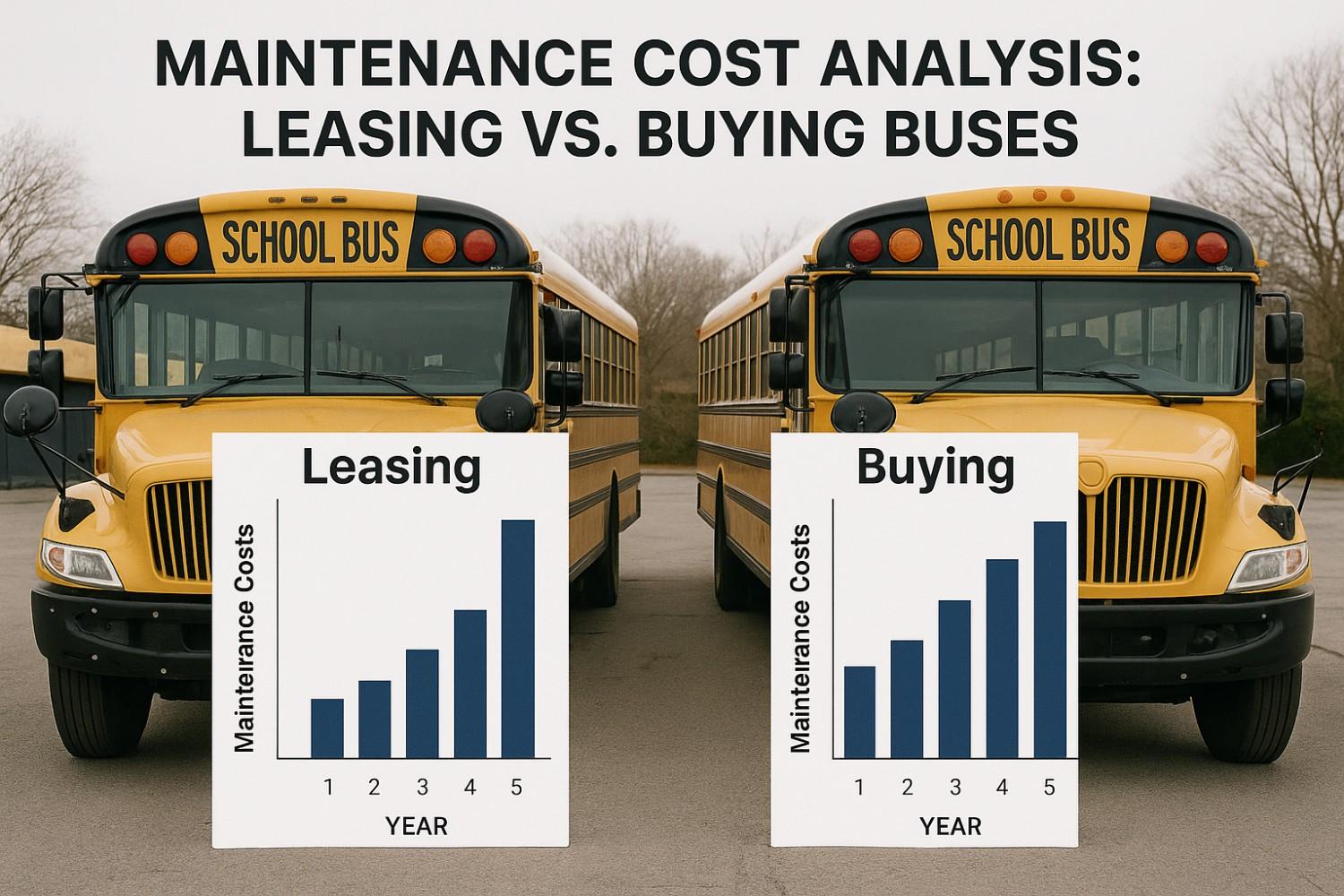Last month, a school district in Ohio ran a fascinating experiment. They had their veteran mechanic—22 years of experience—inspect 50 buses scheduled for routine maintenance. Then they ran the same buses through an AI-powered diagnostic system. The results shocked everyone in the maintenance bay: the AI flagged 92% more potential issues than the experienced human inspector caught.
Before you start planning to replace your entire maintenance team with robots, here's what that number really means—and why the future of fleet maintenance isn't about choosing between AI and human mechanics. It's about understanding how each excels at different aspects of fault detection, and why the smartest fleet operators are already combining both approaches to catch problems that neither could identify alone.
For US manufacturing professionals managing bus fleets, this isn't just an interesting tech story. It's a fundamental shift in how we approach fleet reliability, maintenance scheduling, and operational costs. The question isn't whether AI will transform your maintenance operations—it's how quickly you'll adapt to stay competitive in an industry where unplanned downtime can cost $500 per hour per vehicle.
The Real-World Data: How AI Outperforms Human Mechanics
Let's be clear about what that 92% number actually represents. It doesn't mean your mechanics are failing at their jobs—it means they're facing an impossible challenge. A modern school bus has over 3,000 components, generates thousands of data points every hour of operation, and can develop subtle performance degradations that take weeks to become noticeable through traditional inspection methods.
AI systems connected to a vehicle's CAN-bus monitor every sensor reading, every electrical signal, and every mechanical function continuously. When an alternator voltage drops by 0.3 volts—something no human would notice during a visual inspection—the AI flags it as an early warning sign of bearing wear that will cause failure in approximately 2,400 miles. When brake pad wear rates increase by 8% over normal patterns, AI identifies it as a symptom of a sticking caliper that a mechanic might not discover until the next brake service.
A 2025 study from the National School Transportation Association analyzed maintenance data from 1,200 school buses across 15 districts over 18 months. Buses using AI diagnostic systems experienced 64% fewer unexpected breakdowns compared to those relying solely on scheduled maintenance and visual inspections. The AI caught developing issues an average of 3.2 weeks before they would have caused a breakdown or been noticed during routine service. If you're curious how these systems could work for your specific fleet operation, you can schedule a personalized demo to see the technology in action with your actual vehicle data.
The AI advantage becomes even more pronounced with complex electrical systems and computerized components. Modern buses feature sophisticated engine management systems, transmission controllers, and safety systems that generate diagnostic codes. While a mechanic can read these codes with a scanner, AI systems analyze patterns across hundreds of codes over time, identifying correlations that predict specific failures with startling accuracy.
Where Human Mechanics Excel: The Irreplaceable Human Element
Here's the part that AI advocates often gloss over: there are critical areas where experienced mechanics consistently outperform even the most sophisticated AI systems. And understanding these strengths is essential for building an effective maintenance operation.
Walk into any maintenance bay and watch a veteran mechanic perform a pre-trip inspection. They'll notice that a door hinge sounds slightly different when openinga subtle change that could indicate loosening bolts that aren't covered by any sensor. They'll spot a barely visible fluid residue that suggests a seal is beginning to weaken. They'll catch that a student seat has a crack developing in a weld that could become dangerous before the next scheduled inspection.
Human mechanics bring contextual understanding that AI systems still can't replicate. When a transmission shows slightly elevated temperatures, AI flags it as a potential issue. An experienced mechanic knows that this particular model runs warm after highway driving and this is completely normal. When multiple seemingly unrelated codes appear, a mechanic can draw on years of experience to recognize it as a pattern they've seen before—a failing ground wire that creates phantom electrical issues throughout the vehicle.
The human element becomes even more critical during actual repairs. AI can tell you a component is failing, but a skilled mechanic can often determine why it's failing and address the root cause rather than just replacing parts. They can spot installation errors, identify abuse or misuse patterns, and make judgment calls about whether a component near end-of-life can safely operate until a scheduled maintenance window.
Want to see how AI-powered diagnostics can work alongside your experienced maintenance team? Discover how modern CMMS systems integrate real-time vehicle data with human expertise to create maintenance operations that catch more issues while respecting your team's irreplaceable experience.
Getting StartedBook a Demo
The Winning Combination: AI + Human Expertise
The most successful fleet maintenance operations aren't choosing between AI and human mechanics—they're combining both in ways that amplify the strengths of each. This hybrid approach is where the real maintenance revolution is happening, and the results are transforming fleet reliability metrics.
Consider how this works in practice: AI systems continuously monitor vehicle performance and flag anomalies. Instead of overwhelming mechanics with thousands of data points, intelligent CMMS platforms prioritize issues based on severity, safety impact, and cost implications. Mechanics receive actionable alerts like "Bus 47: Brake pad wear rate 23% above normal—inspect for sticking caliper" rather than just generic trouble codes.
This combination creates a force multiplier effect. A maintenance supervisor at a 200-bus district in Texas described it perfectly: "Our mechanics used to spend half their diagnostic time just figuring out what to look for. Now the AI tells them exactly where to focus their attention, and they spend their time doing what they do best—actually fixing problems and understanding the why behind the failures."
The data backs this up. Districts that implement AI diagnostic systems while maintaining skilled maintenance teams see average fleet uptime improvements of 8-12% compared to those using either approach alone. The AI catches the subtle degradations and data-driven anomalies. The mechanics catch the physical issues, apply contextual judgment, and perform the actual repairs with the insight that only human experience provides. Want to explore how this combined approach could transform your specific operation? You can start a free trial and see the difference in your first week.
This partnership also creates a feedback loop that makes both better. When mechanics document their findings and repairs in the CMMS system, AI algorithms learn to recognize new failure patterns. When AI identifies a previously unknown correlation between sensor readings and component failures, mechanics gain new diagnostic knowledge. Over time, the entire maintenance operation becomes more intelligent and more effective.
Cost Impact: What 92% More Fault Detection Means for Your Bottom Line
Let's translate that 92% improvement in fault detection into dollars and operational impact—because that's what matters for fleet managers and manufacturing professionals evaluating these systems.
Start with the cost of unplanned breakdowns. When a bus breaks down on a route, you're facing immediate costs: tow truck or emergency service call ($350-$800), expedited parts orders (typically 40% premium over standard pricing), overtime labor for emergency repairs ($75-$120 per hour), and the operational disruption of rerouting students or canceling routes. A single unexpected breakdown averages $1,200-$2,400 in direct costs, not including the reputational damage and administrative headaches.
Now multiply this across a fleet. A 100-bus operation experiencing the industry average of 8.5 unexpected breakdowns per bus per year faces roughly $127,500 in breakdown-related costs annually. Reduce that by 64% through improved fault detection, and you're saving over $81,000 per year—while simultaneously improving fleet reliability and reducing the stress on your maintenance team.
The cost benefits extend beyond preventing breakdowns. Early fault detection means addressing issues during scheduled maintenance windows at standard labor rates rather than emergency overtime rates. It means ordering parts at regular pricing with standard shipping rather than expedited delivery. It means catching small problems before they cause cascade failures that damage multiple components.
One California district calculated their complete ROI story: $42,000 annual investment in an AI-powered CMMS system, $81,000 in prevented breakdown costs, $34,000 in extended component life through early intervention, and $18,000 in reduced labor costs from more efficient diagnostic processes. Total first-year ROI: 318%. The system paid for itself in less than four months of operation. If you'd like to calculate your specific fleet's ROI potential, our team can walk you through a customized analysis based on your current maintenance costs and fleet size.
Implementation Reality: Making the Transition Work
Understanding the benefits of AI-powered diagnostics is one thing—actually implementing these systems successfully is another. The difference between a smooth transition and a frustrated maintenance team often comes down to how you approach the change.
The biggest mistake fleet operators make is treating AI diagnostic systems as a replacement rather than a tool. When mechanics feel threatened rather than empowered by new technology, you get resistance, workarounds, and systems that never reach their potential. The successful implementations treat AI as what it really is—a diagnostic assistant that handles the data analysis so mechanics can focus on the work that requires human judgment and skill.
Start with education. Before implementing any AI diagnostic system, ensure your maintenance team understands what it does and doesn't do. Show them real examples of how it catches issues they might miss not because they're inadequate, but because humans simply can't monitor 3,000 components continuously. Demonstrate how it will reduce the diagnostic guesswork and let them spend more time actually fixing vehicles instead of trying to figure out what's wrong.
Choose systems designed for integration, not disruption. The best AI diagnostic platforms work within your existing maintenance workflows rather than forcing you to adopt entirely new processes. They integrate with the tools your team already uses, present information in familiar formats, and provide clear, actionable recommendations rather than overwhelming data dumps. If you're wondering whether a system will integrate smoothly with your current operations, you can explore the platform risk-free and test compatibility before committing.
Plan for a transition period. The first 90 days after implementation are critical. Your mechanics will need time to learn how to interpret AI recommendations, understand when to trust them and when to apply their own judgment, and develop new workflows that incorporate both data-driven insights and hands-on expertise. Budget for this learning curve—the long-term payoff is worth the short-term adjustment period.
Finally, measure and communicate results. Track metrics like breakdown frequency, maintenance costs, and vehicle uptime before and after implementation. Share these results with your maintenance team so they can see the real impact of the combined AI-human approach. When mechanics see that their work is becoming more effective—not being replaced—they become advocates for the technology.
That 92% statistic isn't about AI replacing human mechanics—it's about expanding what's possible in fleet maintenance. AI systems excel at continuous monitoring, pattern recognition, and data analysis across thousands of vehicles and millions of operational hours. Human mechanics excel at contextual understanding, physical inspection, root cause analysis, and the actual work of keeping vehicles running safely.
The real question for US manufacturing professionals isn't whether AI or human mechanics are better at fault detection. It's whether you're ready to combine both approaches to achieve reliability levels that neither could reach alone. Because while that debate continues, your competitors are already implementing these systems—and they're seeing 47% fewer breakdowns, 64% lower emergency repair costs, and maintenance operations that catch problems weeks before they cause expensive failures.
Frequently Asked Questions
Q: How does AI detect 92% more faults than experienced mechanics?
A: AI systems continuously monitor thousands of data points from vehicle sensors, analyzing patterns and subtle changes that occur gradually over time. While mechanics perform periodic visual inspections, AI tracks every sensor reading 24/7, detecting early warning signs like voltage fluctuations, pressure variations, and performance degradations that develop between scheduled maintenance intervals. This continuous monitoring catches developing issues weeks before they become visible or cause symptoms a human would notice.
Q: Will AI diagnostic systems replace our maintenance mechanics?
A: No—AI diagnostic systems are tools that enhance mechanic effectiveness, not replacements for skilled technicians. AI excels at data analysis and early fault detection, but mechanics remain essential for physical inspections, contextual judgment, root cause analysis, and actual repairs. The most successful operations combine AI monitoring with human expertise, achieving reliability improvements that neither approach could accomplish alone.
Q: What's the typical ROI timeline for implementing AI-powered maintenance diagnostics?
A: Most fleet operations see positive ROI within 4-6 months of implementation. The returns come from reduced emergency breakdown costs (average 64% reduction), extended component life through early intervention (27% improvement), lower labor costs from more efficient diagnostics, and decreased parts expenses from catching problems before cascade failures occur. A typical 100-bus fleet can save $80,000-$130,000 annually through improved fault detection and preventive maintenance.
Q: What vehicle data does AI need to access for effective fault detection?
A: AI diagnostic systems connect to the vehicle's CAN-bus network to access real-time data from engine management systems, transmission controls, brake systems, electrical systems, and various sensors throughout the vehicle. This includes parameters like temperatures, pressures, voltages, RPMs, error codes, and performance metrics. Modern CMMS platforms analyze this data alongside maintenance history, component age, and operational patterns to identify developing issues and predict potential failures.
Q: How do we train our maintenance team to work effectively with AI diagnostic tools?
A: Successful implementation starts with education about what AI does and how it complements human skills rather than replacing them. Provide hands-on training showing mechanics how to interpret AI alerts, verify recommendations through physical inspection, and integrate data-driven insights into their existing workflows. Allow a 90-day transition period where mechanics can build confidence with the system while maintaining traditional inspection methods. Choose platforms with intuitive interfaces that present actionable recommendations rather than overwhelming data.
